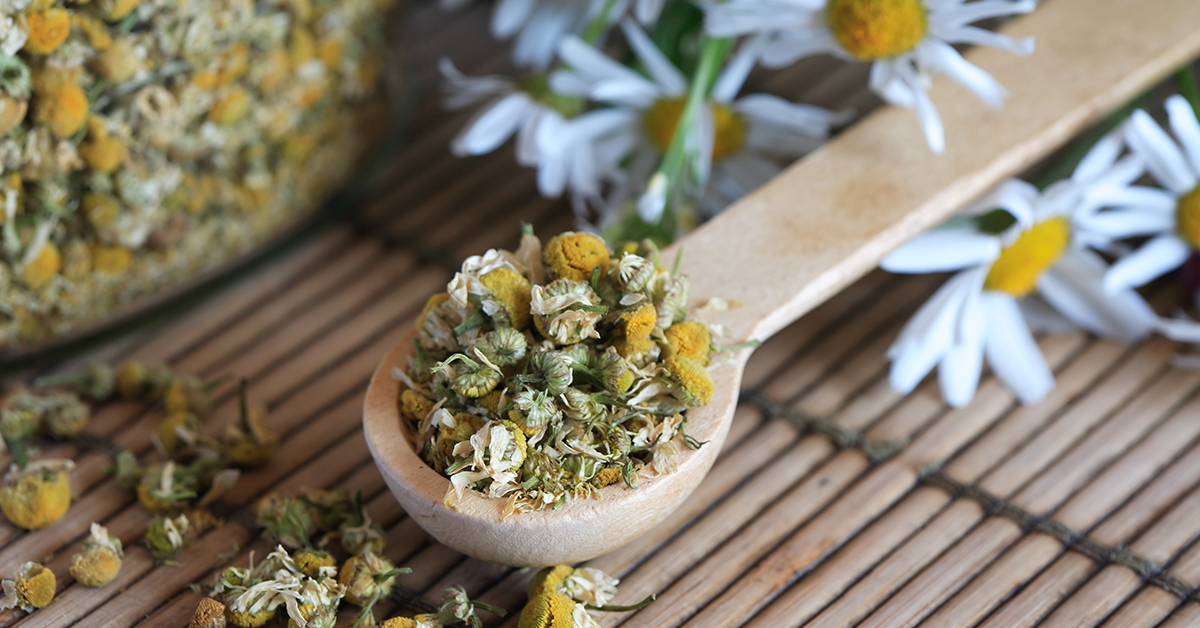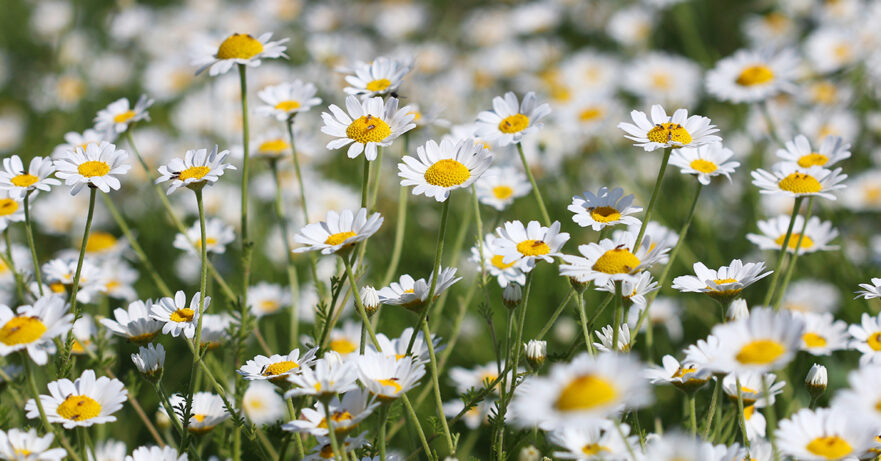In this monograph about chamomile:
📖 Introduction | 🌱 Botanical Description | 📜 Traditional Uses | 🔍 Phytochemistry | ✨ Applications and Uses | 🛡️ Safety Profile
📖 Introduction
Chamomile (Matricaria recutita), also known as German chamomile, is a cornerstone in herbal medicine. It is widely recognized for its gentle, soothing properties. This herb is renowned for promoting relaxation, aiding digestion, and supporting skin health.
| English Name | Chamomile |
| Latin Name | Matricaria recutita |
| Parts Used | Flowers |
| Traditional Uses | Sleep aid, anxiety relief, digestive aid |
| Herbal Actions | Anti-inflammatory, nervine, antispasmodic, carminative. |
🌱 Botanical Description
Scientific Classification
Matricaria recutita belongs to the Asteraceae family, marking its place among other beneficial herbs.
Physical Characteristics
Chamomile displays small daisy-like flowers, with white petals surrounding a yellow center, atop slender stems with feathery leaves.
Natural Habitat and Cultivation Details
Originating from Europe and Asia, chamomile has adapted to various regions worldwide. It flourishes in well-drained soil under full sun.
📜 Traditional Uses
Chamomile has been revered for centuries in various cultures for its calming effects, particularly in aiding sleep, soothing stomach ailments, and reducing anxiety.

🔍 Phytochemistry (Active Constituents)
- Bisabolol: A chief component known for its anti-inflammatory, healing, and antimicrobial properties, making it a key factor in chamomile’s therapeutic benefits.
- Chamazulene: This contributes to chamomile’s anti-inflammatory action and gives the oil its characteristic blue color. While prominent in German chamomile (Matricaria recutita), it’s crucial to differentiate it from Roman chamomile (Chamaemelum nobile), which may have different properties.
- Flavonoids: Like apigenin, which plays a role in chamomile’s ability to relieve spasms and inflammation, showcasing the wide range of chamomile’s health-promoting effects.
- Coumarins: Compounds that further support the plant’s soothing effects. While beneficial, it’s important to use chamomile with caution due to the potential mild blood-thinning effects of coumarins, especially in individuals on anticoagulant medications.
✨ Applications and Uses
Chamomile is extensively used in herbal medicine for:
- Relaxation and sleep support: Its calming properties are widely recognized to benefit those with sleep disturbances by promoting relaxation and potentially improving sleep quality.
- Digestive aid: Helps to alleviate issues like bloating, indigestion, and irritable bowel syndrome (IBS), contributing to overall digestive comfort.
- Skin care: Applied topically, chamomile is known to soothe irritated skin and promote healing, making it a popular choice for managing minor skin irritations and conditions.
The efficacy of chamomile in these applications is attributed to its rich phytochemical makeup, particularly bisabolol and chamazulene, which contribute to their soothing properties.
🛡️ Safety Profile
Chamomile is generally considered safe when used as directed.
However, it may cause allergic reactions in individuals sensitive to the Asteraceae family, including reactions similar to those caused by ragweed, chrysanthemums, marigolds, or daisies.
Pregnant and breastfeeding women should consult a healthcare provider before use.
Chamomile may interact with certain medications, such as sedatives and blood thinners, underscoring the importance of consulting with a healthcare professional if you take any medications.
Chamomile’s versatility and effectiveness make it a beloved herb in herbal medicine. It offers a natural path to relaxation and well-being.
📃 Related Posts
🌱 Related Herbs

